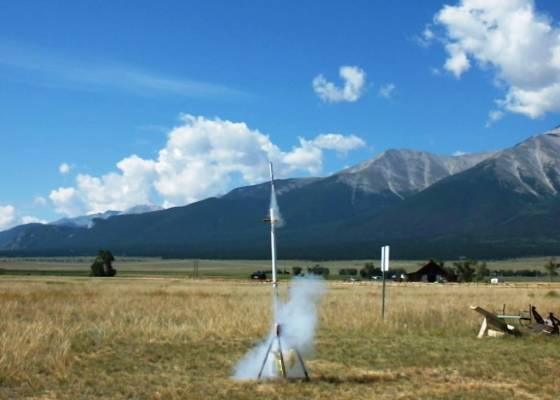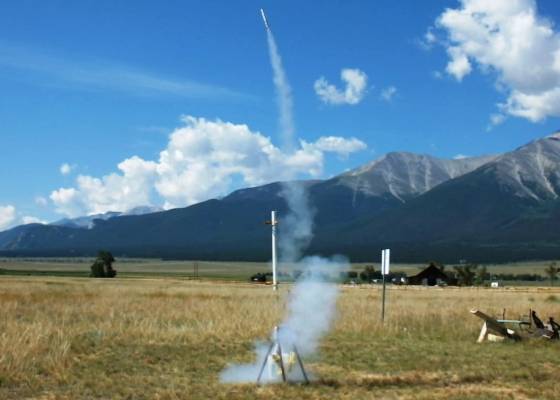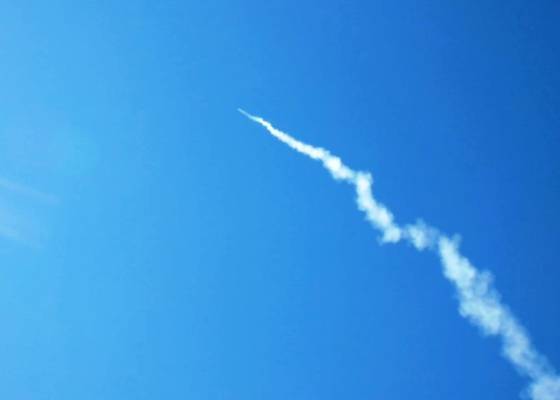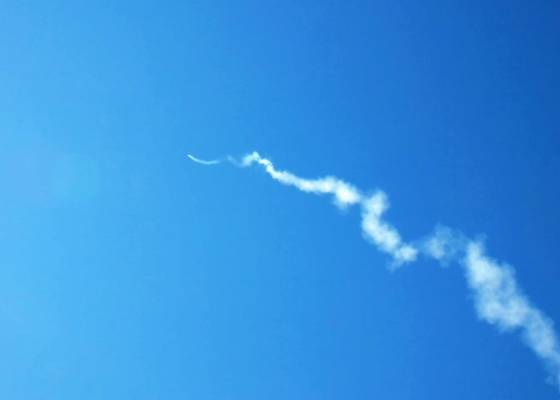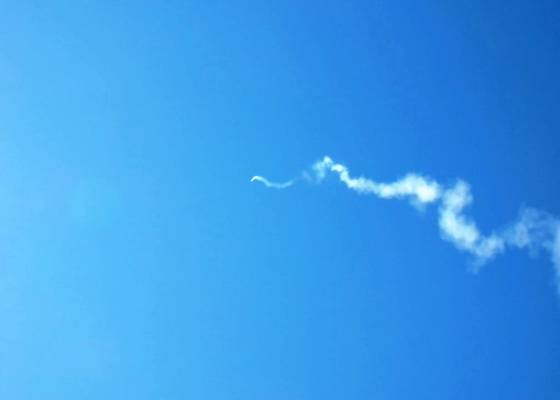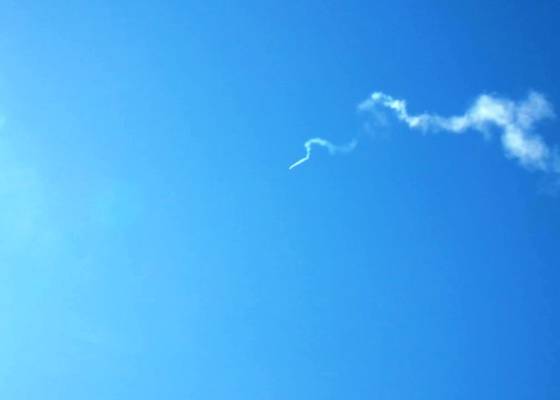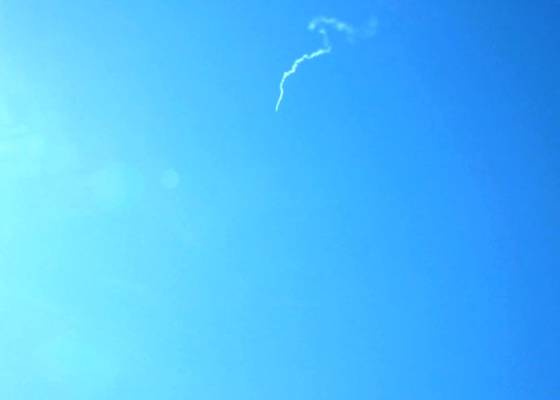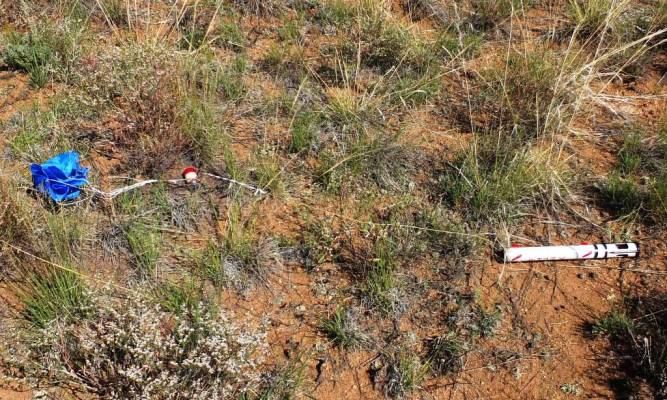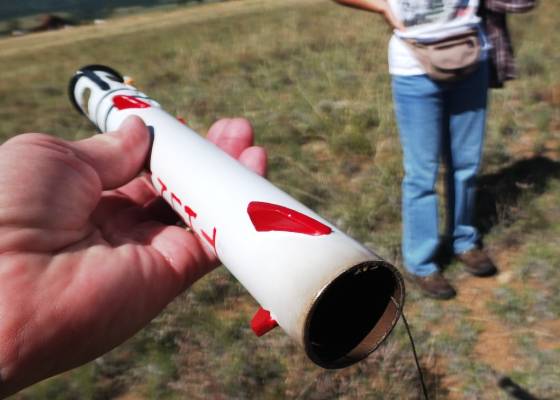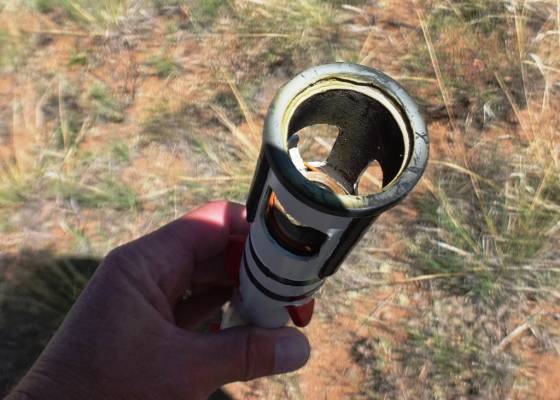A finless rocket that flies stable? That is the mission of this rocket.
This rocket is a scratch build / scratch design that uses Gas Dynamic Stability (GDS) and Spin Stability.
An Ikaros Marine Flair uses GDS to stabilize the rocket launched flare. It has openings below the motor nozzle and the motor exhaust sucks air into these openings. That stabilizes the rocket as long as the motor is burning.
The problem with that concept for a model rocket is the motor only thrusts for a short period, after that it coasts. You loose the GDS during the coast phase.
Spin Tabs, aka canted fins, are used on this rocket. This gets the rocket spinning about its longitudinal axis, which stabilizes the rocket during the coast phase.
This rocket also features a custom wood lathe turned nose cone, made from pine.
Powered by a 24mm motor, recovery is via a 12" nylon chute.
A 2" PVC pipe is used as a launch silo.
Link to Build Thread: Lakeroadster's Finless Rocket Utilizing Gas-Dynamic-Stabilization | The Rocketry Forum
| Flight Date: | 2022-07-26 |
| Rocket Name: | (BAR-09) THUNK! Finless, Gas Dynamic Stabilized |
| Flyer's Name: | John Simmons |
| Motors: | D12-5 |
| Expected Altitude: | 511 Feet |
| Wind Speed: | 5.00 mph |
| Launch Site: | Local |
| Actual Altitude: | 511 Feet |
Ignition was quick, almost no hesitation lighting the motor. Very minimal time lapse between ignition and lift off.
The rocket accelerated quickly, plenty of speed exiting the launch silo (32.2 mph per sim)
Winds were less than 5 mph and from the north. The rocket did not weathercock. It flew straight and true being pushed slightly toward the south from the wind.
The exhaust pattern visually looked like a corkscrew, verifying that the rocket is indeed rolling about it's longitudinal axis.
The simulation software estimated apogee @ 511 feet, and the launch seemed to reflect that (no altimeter was used).
Visually when the motor ejection charge occurred the parachute deployed and blossomed.
The rocket ground hit about 40 feet south of the launch horse.
Photo's were taken of the rocket at the ground hit location. Upon further review the rocket was undamaged.
What was learned from this flight?
What an awesome flight. Our first silo launch, it's a neat visual, smoke out the bottom of the tube and the it comes screaming out of the top of the tube.
| Stage | Motor(s) |
|---|---|
| 1 | Estes D12-5 |
 |
 |
